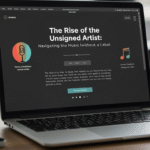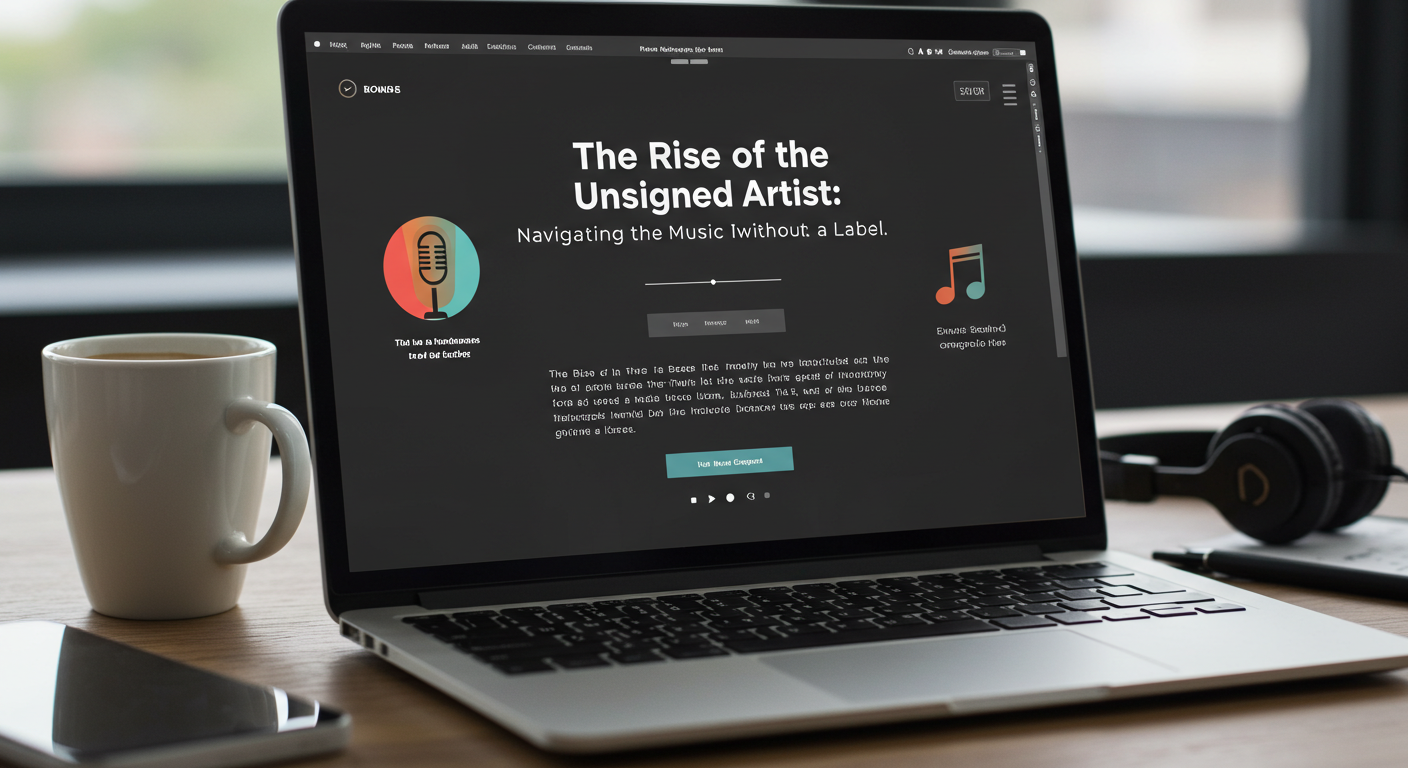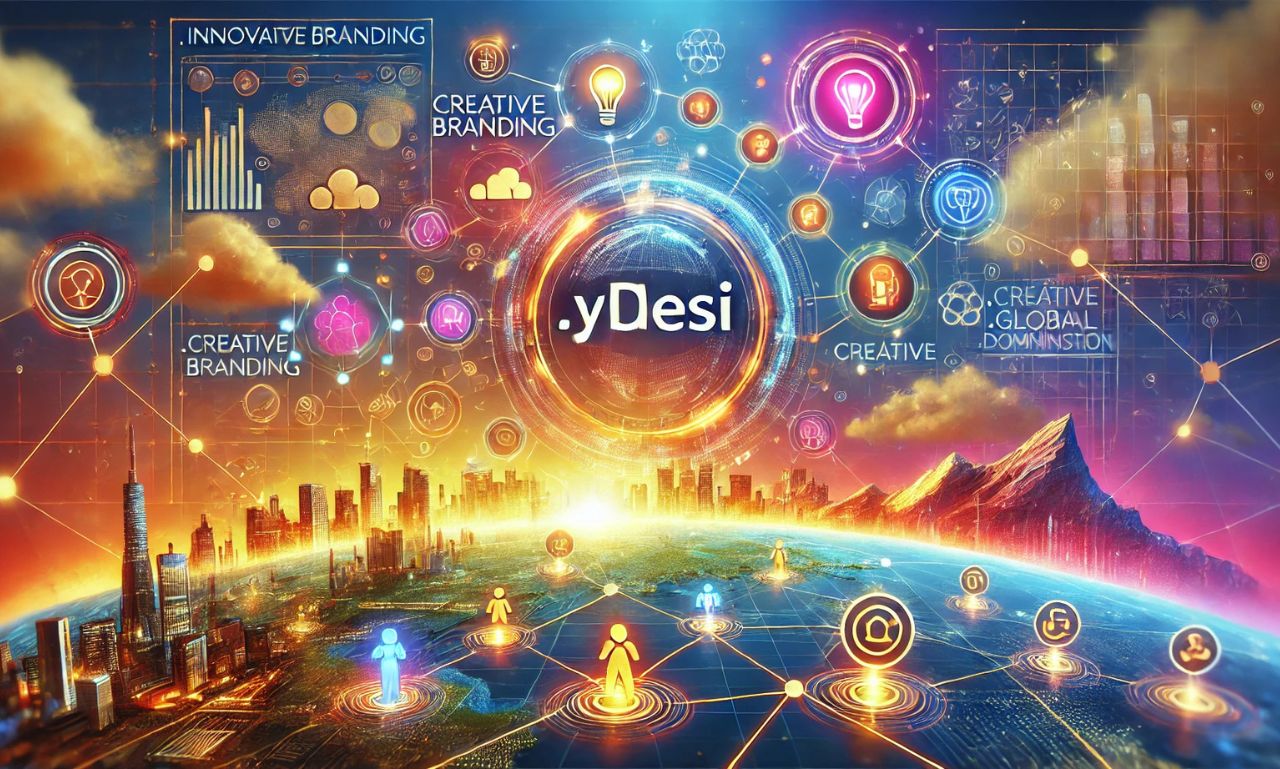Over the past ten years, the music industry has seen a dramatic change as digital platforms have made it easier for anybody to reach listeners anywhere in the world. The days of artists needing to sign with a major label in order to succeed are long gone. Unsigned performers are doing quite well these days, using social networking, streaming, and direct fan interaction to create long-lasting careers.
However, in 2025, what does it really mean to be an unsignedunsigned artist? In an industry still dominated by stars with labels, how do they compete? The difficulties, chances, and tactics faced by unsigned musicians hoping to establish themselves are examined in this article.
In the current music industry, what does “unsigned” mean?
A musician who performs without a recording or distribution agreement from a big or independent label is known as an unsigned artist. These artists take complete charge of their careers, managing production, marketing, and distribution on their own, rather than depending on gatekeepers in the traditional industry.
Important Qualities of Unsigned Artists
Crowdfunded or self-funded initiatives
Do-it-yourself advertising on social media and streaming services
Direct sales to fans (bandcamp, Patreon, and merchandise)
Creative freedom is unrestricted by contractual commitments 6.
Being unsigned gives artists more creative freedom, but it also means they have to manage their businesses, produce, and market their work all at once.
Obstacles Unsigned Artists Face
1. Insufficient Financial Support
Unsigned musicians frequently rely on their own funds or crowdsourcing, in contrast to signed artists who receive advances and label-funded promotions. Large-scale marketing efforts, expert mixing and mastering, and top-notch production can all be hampered by financial limitations. 7.
2. Competition & Visibility
It’s more difficult than ever to stand out with over 100,000 tunes added to Spotify alone every day. Unsigned musicians have to put in more effort to get media attention, influencer partnerships, and playlist positions without a label’s PR machine.
3. Issues with Distribution and Monetization
Even if websites like DistroKid and TuneCore make distribution easier, making money off of music is still difficult. The tour sponsorship agreements, sync licensing opportunities, and revenue splits that labels usually arrange present challenges for many unsigned musicians.
4. Insufficient Industry Lack
Despite challenges, many unsigned artists are thriving by adopting innovative strategies. Here’s how:
How 2025 Will See the Success of Unsigned Artists
1. Make use of social media and streaming algorithms
Optimize metadata (keywords in song titles and descriptions) with Spotify for Artists and Apple Music Insights.
TikTok & Instagram Reels: Songs can become viral thanks to short-form video trends.
Use names that contain a lot of keywords (such as “Unsigned Pop Artist – [Song Name] Official Lyric Video”) for YouTube SEO.
2. Establish a Direct Loyal Fanbase
Provide exclusive content (demos, behind-the-scenes) through Patreon and Membership Models.
Bandcamp Fridays: Make the most of fan support when running marketing initiatives.
Email lists: Direct communication is preferable to relying on algorithms.
3. Work Together Strategically
To increase reach, cross-promote with other independent musicians.
For natural promotion, collaborate with micro-influencers.
4. Enhance Touring & Live Performances
Local performances → Regional tours: Develop progressively.
Virtual concerts: Make money by selling tickets live (e.g., StageIt).
5. Develop Your Business Acumen
Publishing & Copyright: Sign up with PROs (ASCAP, BMI).
Send music to libraries (Pond5, Epidemic Sound) for synchronized licensing.
Merchandising: Use Shopify to sell clothing and limited-edition records.
Unsigned Artists Who Achieved Great Success: 1. Chance the Rapper
remained unsigned despite using grassroots marketing and mixtapes to win Grammys.
2. Sultana Tash
gained popularity through busking videos on YouTube before selling out international tours.
3. The Russ
went platinum on their own after releasing more than 100 songs and producing them alone.
These musicians demonstrate that skill plus strategy equals label support.
In conclusion, is it right for you to go unsigned?
In 2025, it is both freeing and challenging to be an unsigned artist. You still have complete creative and financial power, but perseverance, flexibility, and business savvy are necessary for success.
The resources to succeed—social media, streaming, and direct fan interaction—are now more available than ever for individuals who are prepared to adopt the do-it-yourself mentality. The secret? Authenticity, consistency, and prudent use of resources.
You have the ability to shape your career, regardless of whether you decide to stay unsigned or eventually collaborate with a label.










